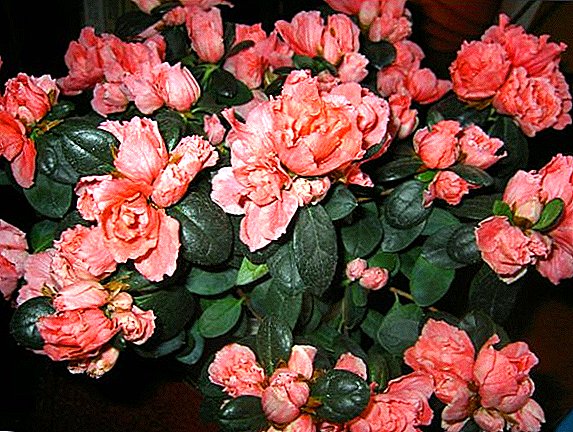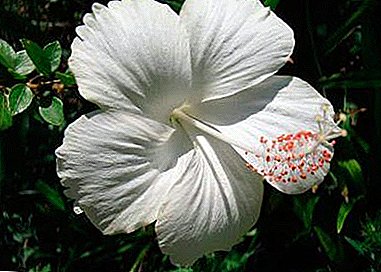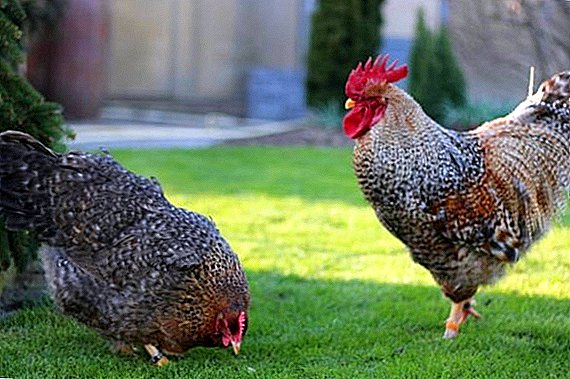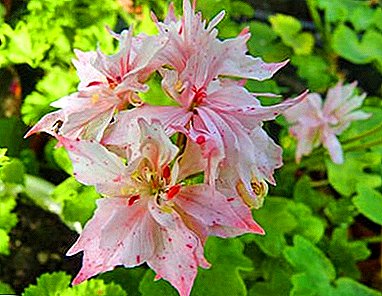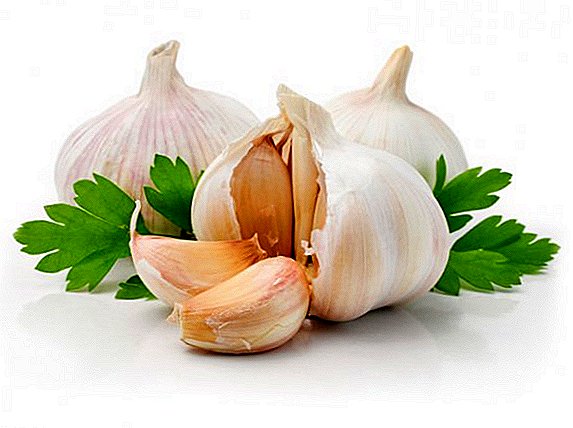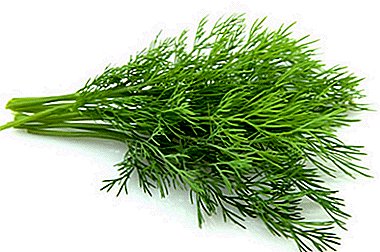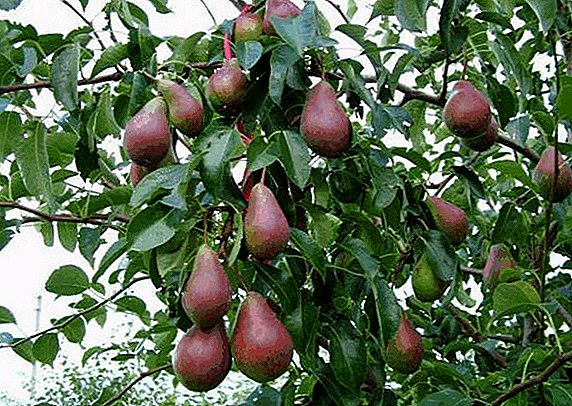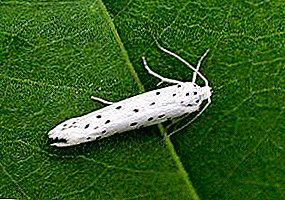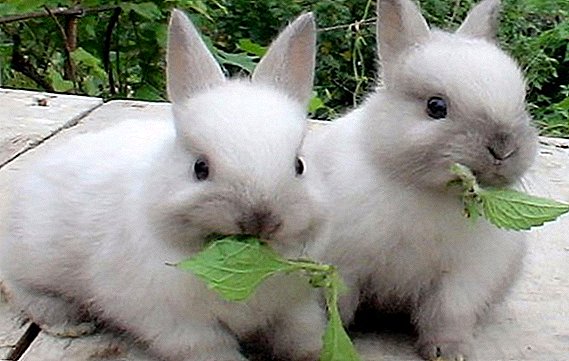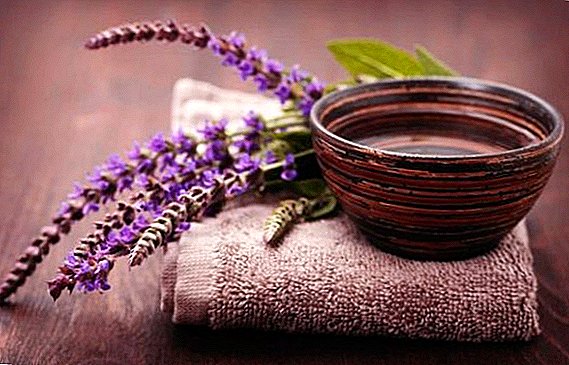 Sage, or salvia - one of the most useful plants. Latin is translated as "healthy." In medicine, salvia is used along with such well-known medicinal herbs as chamomile and calendula. Easily recognizable for bright blue colors and rich aroma. There are many types of sage, and they all have individual properties and aroma. Today we look at these types of plants - sage meadow and sage medicinal. Let's tell how they look, how to distinguish them from each other and what they have useful properties.
Sage, or salvia - one of the most useful plants. Latin is translated as "healthy." In medicine, salvia is used along with such well-known medicinal herbs as chamomile and calendula. Easily recognizable for bright blue colors and rich aroma. There are many types of sage, and they all have individual properties and aroma. Today we look at these types of plants - sage meadow and sage medicinal. Let's tell how they look, how to distinguish them from each other and what they have useful properties.
What does meadow sage look like?
Salvia meadow - very high (up to 80 cm in length) herbaceous erect perennial plant, distributed throughout Europe. It grows on forest edges, fields, rocky and grassy slopes. The stem is straight, simple, exceeding the inflorescence and dipped from the base. During the flowering period, the plant attracts with beautiful bright purple flowers and characteristic spicy aroma.
Did you know? In ancient times, the Egyptian priests after devastating epidemics or destructive wars forced all women to use sage decoction, in order to increase the birth rate and population.

The leaves are elongated, lanceolate, pointed upward and widening downwards, located on the stem in the opposite order. The underside of the leaves is covered with fine thick hairs, and the top is smooth. Fruits - spherical-triangular brown nuts 2 mm in diameter. The plant requires loamy soil, sunny, open spaces. It is also grown as an ornamental plant in vegetable gardens and gardens.
Description of Salvia
This shrub or grassy perennial plant. Its homeland is considered to be Italy and Southeast Europe. In the wild form, salvia officinalis is distributed in the countries of the Balkan Peninsula and the Mediterranean. The plant is cultivated in Italy, France, Greece, Slovakia, the Czech Republic, Russia, Moldova, Ukraine, the countries of the former Yugoslavia and other countries.
Many plants have medicinal properties: wild rosemary, marsh, kupena, mint, melissa, echinacea, cloves, portulak, anise, lovage, mountain ash red, yew berry, gentian.
Salvia officinalis grows in gardens, fields, in gardens. The plant is thermophilic, freezes out with insufficient snow cover and in severe winters. The plant is drought-resistant, not tolerating excess moisture. It has a powerful, woody, branched, densely maculate root from below. The stem is erect, branched, woody at the bottom, and grassy at the top, fluffy, whitish, reaching a height of 70 cm.

The leaves are oblong, opposite, 0.8–4 cm wide and 3.5–8 cm long, blunt or sharp, wedge-shaped or rounded at the base, and small-curled at the edges. Flowers of blue-violet color, much less white or light pink, two-lipped, placed in the upper spike inflorescences rings. Flowering sage medicinal falls on May-July, and fruit ripening - in August-September. The plant begins to bloom in the second year. The fruit is in the form of a nutlet, dark brown, rounded, 2.5 mm in diameter.
Did you know? Egyptians attributed to sage magical properties that help prolong life. It was believed that to prolong life it would be enough just to plant salvia in my garden.
What is the difference between sage and meadow sage (field)?
Sometimes they are confused among themselves. But sage meadow has much less pronounced healing properties than medicinal, and this is their main difference. The meadow sage is less saturated with phytoncides and essential oils, it grows wild and is almost never used in traditional medicine.

Its leaves do not have such a strong, pronounced smell as medicinal, and its flowers have no smell at all. External differences of these two types are insignificant. The leaves are medicinal much smaller and have a silvery shade, while the flowers have a slightly bluish shade.
All truth and lies about the beneficial properties of both kinds
The plant is endowed with a huge amount of useful properties. For medicinal purposes, the tops of the plant are used with flowers and leaves. It has anti-putrid, analgesic, astringent, diuretic, anti-inflammatory, estrogenic, disinfecting, expectorant, carminative, hemostatic effect on the human body.
They treat diseases of the gastrointestinal tract, dental diseases, diseases of the kidneys, liver, viral infections, sore throat, cough, parotitis, bronchitis, sciatica, hemorrhoids, gingivitis, neuritis, polyarthritis, diabetes.
Important! Phytosterols, which are contained in the leaves of salvia, have indications for the treatment of the female reproductive sphere and contribute to conception.
This herb relieves asthma attacks, treat gynecological problems (cervical erosion, inflammation of the vaginal mucosa, thrush, regulates the menstrual cycle, stimulates ovulation, reduces the symptoms of menopause) and skin diseases (wounds, ulcers, psoriasis, burns, frostbite, furuncles).

The plant is used to fight diseases of the lungs, urinary tract, to relieve cough and much more. It will help with bloating, stimulates the motility of all parts of the digestive tract and appetite. In addition, it improves memory, increases attention, improves performance.
Sage is a good neighbor for vegetable crops: carrots, strawberries, tomatoes, all kinds of cabbage.
Sage essential oil is used in cosmetology. Aromatherapy with essential oil is used to relieve stress, headache, enlightenment of the mind. The broth is used as a hair rinse to impart shine, get rid of dandruff and stimulate their growth.
In addition to obvious benefits, sage also has serious contraindications:
- It is strictly prohibited for pregnant women in all periods, since it increases the tone of the uterus (it can lead to miscarriage or detachment of the placenta in the later periods) and reduces the production of progesterone.
- When breastfeeding, as he stops lactation.
- For breast tumors, endometriosis, after removal of cancer of the uterus and mammary glands (elevated estrogen levels).
- With hypertension (increases blood pressure).
- With nephritis, pyelonephritis, glomerulonephritis, acute inflammation of the kidneys.
- With reduced thyroid function.
- When coughing (coughing from it can only intensify).

Is sage meadow useful? Of course! It has a lot of useful properties: toning, wound healing, antibacterial, expectorant, anti-inflammatory, fungicidal, tonic, diuretic, hypotonic, hemostatic, antispasmodic.
Important! Long-term use of salvia drug can cause serious poisoning.
It is used to treat asthma, neurosis, skin diseases, bronchitis, neurasthenia, thrush, scrofula, scabies, respiratory infections, periodontal disease, stomatitis, rheumatism, and gastrointestinal disorders. With the help of sage meadow can relieve pain in women associated with menstruation. It has the function of stimulating digestion, disinfection, relieves rheumatic pains, heals wounds and burns.
Aromatic bath with essential oil salvia field will help relieve muscle and nervous tension. This fragrance will also relieve headaches and ease breathing when you have a cold. The spicy aroma of this plant is widely used as perfume and fragrant seasoning. 
It is known to use it in cosmetology for the intensity of hair growth and treatment of problem skin. It is used both internally and externally, in the form of inhalations, baths, tinctures, compresses, and decoctions. But it is undesirable to use sage meadow in inflammatory diseases of the kidneys, individual intolerance to grass, amenorrhea, hypotension, pregnancy and lactation.
Important! Long use of this plant is not recommended. Breaks are required every two to three months of consuming sage meadow.
Both plants - and sage meadow, and even more sage medicinal - extremely useful and have found their application in medicine and in cooking.


